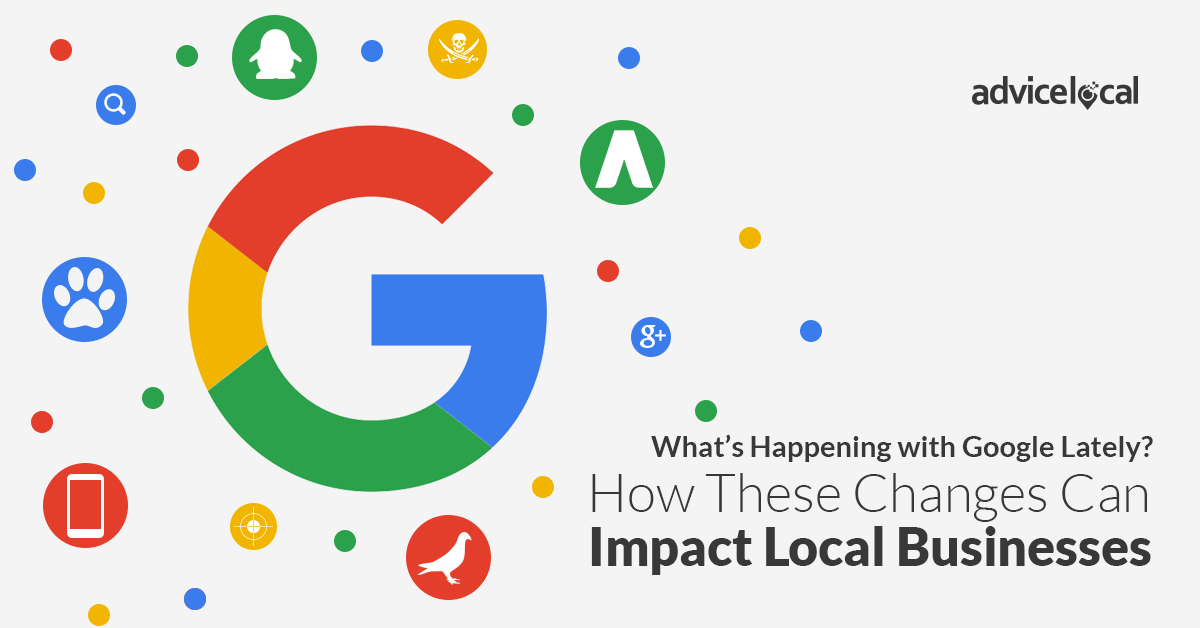Google has certainly been busy lately! That’s exactly why we published this article about future-proofing your SEO strategy against Google updates. Over the past month, marketers and consumers alike have noticed a number of interesting changes to some of the search giant’s core products and features. Since many of the updates affect online visibility for local businesses, we thought it would be helpful to provide a quick glimpse into what’s changed recently.
Google’s Recent Updates Include:
- Changes the star rating system so results are displayed after only one review
- New Google Business Profile guidelines for service area and virtual offices
- The introduction of Lists for Google Maps
- Search ranking changes that suggest a possible Phantom V update
Updates to Google’s Five-Star Rating Scale
Google will now display a star rating when a business receives its first customer review. Previously, Google would only show a star rating for businesses with five or more reviews. These are the ratings that show up next to a business in search results, so it plays an important role in shaping consumer perceptions of a company.
The original goal was to ensure star ratings were an accurate reflection of the business before showing it to potential customers. Now, a visible star review can be determined by just one or two customers. This reinforces the point that it’s important for businesses to collect reviews from a wide pool of customers to build up a positive, accurate, trustworthy online presence.
Additionally, Google recently updated how it calculates rating averages. The old method used the Bayesian average to determine a business’ star rating (this involved looking at the ratings for all businesses and gave more weight to five-star reviews), but Google has now switched to the arithmetic way of finding the average (that is, adding all of a business’ ratings together and dividing by the number of ratings).
Update to Google Business Profile Guidelines for Service-Area Businesses
Google Business Profile (formerly Google My Business) guidelines have been updated with more detailed instructions for listing the address of a service-area business or virtual office. The addition to the guidelines can be found in the expandable “Address” section of Google Business Profile Help under the heading “Service-area businesses.”
According to the new guidelines, this update is intended for “businesses that serve customers at their locations.” It stipulates that these service-area businesses should maintain one page for their main location or office and then “designate a service area from that point.” These businesses are not allowed to list a virtual office location unless it is actively staffed and “able to receive customers during its stated hours.”
Introducing Lists for Google Maps
Google Maps now allows iOS and Android users to create, save, and share lists of their favorite local places. These lists fall into three categories – “Favorites,” “Starred Places,” and “Want to Go” – and can be private, public, or sharable by link. Users can access their lists and those they follow even when they’re offline.
The ability to make a list public means anyone can create a list of their favorite bakeries or pubs or shoe stores and allow other Google Maps’ users to discover it. People can also create private lists and share the link with friends.
Maps lead product manager, Zach Maier, explains that Google wants “to help people break out of their routine, and do something new,” rather than simply help them get from point A to point B. Note that the feature is currently only available on mobile, but lists can be accessed on desktop via shared links, and Google plans to release a full web version in the future.
Although public lists are not yet searchable, suggestions from a user’s personal lists will appear when they type in a new search. This will influence how consumers search for local businesses on Google and how customers recommend their favorite spots to other shoppers.
Shifting Search Results Could Point to Phantom V Update
We know that Google is shaking things up in search results, but it’s unclear exactly what is going on behind the scenes. One popular theory is that the recent upheaval in search rankings was caused by a Phantom update on February 7th. If this is indeed the case, it would be Google’s fifth Phantom update since the first one in May 2013.
Phantom is believed to focus on the quality of a website’s content. Those that appear to be affected by the update tend to experience fluctuating results with each iteration. However, as Barry Schwartz pointed out, Google has never confirmed any of the Phantom updates and has also said it won’t confirm any future Panda updates.
Unless Google makes an official statement, it’s impossible to know the exact implications for local businesses. We recommend businesses continue to focus on high-quality content that meets consumers’ needs and provides quick answers and solutions during micro-moments.
What Else Can We Expect from Google?
This slew of recent updates gives us some insight into Google’s inner workings and long-term plan, but leaves us speculating about what surprises the search giant will unveil next. One thing we know for sure is that these updates are predictors of more changes coming soon, especially to how local businesses appear in search results.
Do you know how the businesses you represent stack up against the competition? Start with our free online visibility report and find out.
Let us know which update you are most curious about and we’ll see about diving deeper into the topic for you!




